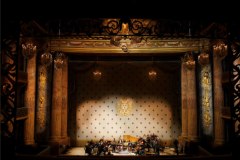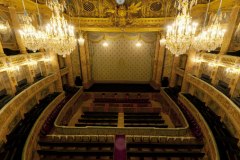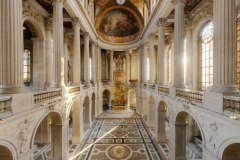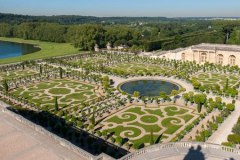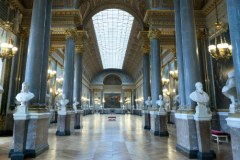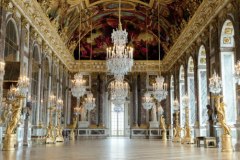Lully: Proserpine
Mo | Tu | We | Th | Fr | Sa | Su |
Musical Tragedy with a Libretto by Philippe Quinault, premiered in 1680 in Saint-Germain-en-Laye.
Plot
Act 1
The Palace of Ceres
Scene 1. The goddess of fertility Ceres, the nymph Cyané, and the river god Crinise enjoy the peace and beauty of Sicily. They praise Jupiter, who has successfully defended the gods against the attacks of the giants. Cyané and Crinise set out to gather the deities and the people for a victory celebration.
Scene 2. Mercury descends from the heavens and tells Ceres, on Jupiter's behalf, to go to Phrygia to ensure fertility there. When Ceres shows disappointment that Jupiter does not seem to return her love, Mercury responds that he does not have enough time for love due to his governmental duties. Mercury flies back to the sky.
Scene 3. Ceres asks the nymph Arethusa to take good care of her daughter Proserpine during her absence. However, Arethusa also wants to leave Sicily. She feels out of place here and fears the advances of the river god Alphée. Ceres advises her to stay in the land and give in to his love. She sets out to say goodbye to Proserpine.
Scene 4. Arethusa believes she cannot resist Alphée for long (Arethusa: “Vaine fierté, faible rigueur”). Therefore, she tries to flee when she sees him coming.
Scene 5. Alphée assures Arethusa that he has given up hope for her love and will no longer bother her. He now wants to court Proserpine and asks Arethusa to help him. Arethusa refuses.
Scene 6. Proserpine announces to Alphée, Arethusa, Cyané, Crinise, various nymphs, woodland and water deities, and the people of Sicily that her mother must leave the land for a while. Everyone deeply regrets this.
Scene 7. Ceres bids farewell to everyone in a carriage drawn by winged dragons and asks them to take care of her daughter and entertain her with cheerful music.
Scene 8. The celebrations for Jupiter's victory begin. Everyone sings and dances around the trophies won from the giants. Suddenly, an earthquake causes Ceres's palace to collapse. Horrified, Proserpine calls upon Jupiter for help against the giants attacking again. Jupiter hurls a thunderbolt at Mount Etna from afar, causing it to erupt. The leader of the giants is driven back.
Act 2
The Gardens of Ceres
Scene 1. Alphée confesses to Crinise that his feelings for Arethusa have intensified.
Scene 2. The underworld demon Ascalaphe has been sent by Pluto to Earth to check if the earthquake has opened a new entrance to the underworld. He tells Alphée that he fell in love with Arethusa in Hell when she fled there before him. He believes that, although Alphée failed, he himself will be able to awaken her feelings.
Scene 3. Alphée is jealous of Ascalaphe (Alphée: “Amants qui n’êtes point jaloux”).
Scene 4. Alphée tells Arethusa that Ascalaphe is searching for her and that she might reciprocate his feelings. Arethusa continues to believe that Alphée now desires Proserpine. Both refuse to admit that they love each other.
Scene 5. Ascalaphe confesses his love to Arethusa. However, he realizes that she actually prefers Alphée and is confident that his love pain will soon pass. He also announces that Pluto will soon pass by here before returning to his realm.
Scene 6. Pluto informs Arethusa that the earthquake has not opened a new entrance to the underworld. He wants to see Proserpine before his departure. Arethusa tells him that she is fleeing from her suitors. However, he might be able to see her for a moment if he hides in the bushes.
Scene 7. Shortly afterward, Pluto tells Ascalaphe that he found Proserpine with tears in her eyes while praying and immediately fell in love with her (Duet: “L’Amour, comblé de gloire”).
Scene 8. Pluto and Ascalaphe, hidden, watch Proserpine dance with the other nymphs and sing about the beautiful days and peace. Proserpine and Cyané search separately for flowers to make a garland for Ceres's return.
Scene 9. Pluto summons eight deities of the underworld, who rise from the earth. At the same time, his chariot appears. Pluto and Ascalaphe try to calm the frightened nymphs. Proserpine must take a seat in Pluto's chariot and is carried off to the underworld. Only her scarf remains in Cyané's hands.
Act 3
The Fire-Breathing Mount Etna and Its Surroundings
Scene 1. Alphée, Arethusa, and Crinise, along with other nymphs and woodland deities, desperately search for Proserpine.
Scene 2. Arethusa blames herself for having trusted Pluto too easily. She wants to go to the underworld to find out if he is holding Proserpine captive. Alphée insists on accompanying her.
Scene 3. When Ceres returns from her journey, no one dares to approach her. Alphée and Arethusa descend into Hell. The others hide.
Scene 4. Ceres looks forward to seeing her daughter again. She wonders why all the nymphs she thought she had seen have disappeared.
Scene 5. Ceres asks some of the nymphs and woodland deities who come out of hiding about Proserpine. They give her no answer but only lament.
Scene 6. Cyané tells Ceres about the abduction of her daughter. However, when she is asked to name the culprit, she loses her voice.
Scene 7. Ceres is desperate. She does not even know whom to accuse of this crime. She suspects Apollo or Mars, whose mothers envy her beautiful daughter. In her anger, she wants to destroy the entire area.
Scene 8. Ceres’s followers cut down trees and make torches from the branches, which they light at the fire of Etna. They burn the fields. Ceres vents her anger and ignores the lamentations of the nymphs, woodland deities, and inhabitants.
Act 4
The Elysian Fields
Scene 1. A group of blissful shades sing, accompanied by flutes, about their beautiful life in this place where everything serves love and pleasures can be found everywhere.
Scene 2. Proserpine laments her lost freedom. Ascalaphe and the shades advise her to accept and enjoy Pluto's love.
Scene 3. Arethusa and Alphée arrive. They have previously spoken with Pluto and follow his wish to ease Proserpine's pain. When Proserpine expresses her surprise that they are now together, Arethusa replies that nothing is impossible for enduring love. Ascalaphe adds that Pluto will also find a way for her to accept his love. However, she can no longer return to Earth as she has already eaten a fruit of the underworld. She can only leave Hell with his consent now. Proserpine curses Ascalaphe, who showed her the dangerous fruit. He then transforms into an owl and flies away.
Scene 4. Proserpine begs Pluto to release her (Duet Proserpine/Pluto). He points out instead the comforts available here despite the lack of light (Jupiter: “Je suis roy des Enfers”). He dismisses her fear of eternal torment by referring to his eternal love.
Scene 5. Pluto calls upon the deities and the three judges of the underworld to honor their new queen. The blissful shades join in the praise. Everyone brings valuable gifts to Proserpine and celebrates with dance and song.
Act 5
Pluto's Palace
Scene 1. Pluto asks his subjects, the three judges, the three Furies, and the deities of the underworld for advice. Jupiter has ordered him to release Proserpine. He finds this unjust as she is his first love, while Jupiter himself has had hundreds of love affairs. The others agree with him. To emphasize their will, they want to free the giants from their prison and ravage the world.
Desolate Area
Scene 2. Ceres continues to lament the loss of her daughter and her fate of living in pain forever.
Scene 3. Ceres hears voices from the underworld proclaiming the end of the universe.
Scene 4. Alphée and Arethusa leave the underworld and tell Ceres that Proserpine is being held captive by Pluto himself, who loves her and wants to rule the underworld with her. Jupiter has already demanded her release, causing turmoil in Hell. Ceres begs Jupiter not to give up their daughter.
Scene 5. Mercury descends from the heavens and announces the gods’ decision: Proserpine is to spend her time alternately with Ceres and Pluto. For their wedding, all the gods of the underworld, the earth, and the heavens shall gather. The sky opens, and Jupiter appears among the heavenly gods. Pluto and Proserpine rise from a throne in the underworld. Ceres takes her place next to her daughter. Richly adorned underworld deities accompany Pluto. The earthly gods also join the celebrations, to Ceres's joy and Proserpine’s honor.
Scene 6 “dernière.” Jupiter reaffirms the decision. Everyone celebrates the marriage of Pluto and Proserpine and the restored peace among the gods.
Program and cast
VIP CATEGORY: Best seats in house with complimentary glass of champagne and programme.
PRESTIGE CATEGORY: Excellent seats with complimentary glass of champagne and programme.
Show in French with French and English surtitles
Ambroisine Bré: Arethusa, Peace
Déborah Cachet: Cyane, Felicity, a Nymph
Véronique Gens: Ceres, Abundance
Jean-Sébastien Bou: Crinise, Discord
Marie Lys: Proserpine, Victory
Nick Pritchard: Mercury
Laurence Kilsby: Alphée
Olivier Gourdy: Pluton
Olivier Cesarini: Ascalaphe
David Witczak: Jupiter, following Proserpine
Chœur de chambre de Namur
Les Talens Lyriques
Christophe Rousset: Conductor
Palace of Versailles Opera Theater
Royal Opera
The Royal Opera of Versailles, located in the grounds of the Castle, one of the major opera houses.
The opening of the opera house at Versailles brought to a close a process of planning, projects and designs that had lasted for nearly a century. While the Royal Opera was finally built towards the end of the reign of Louis XV, it had been envisaged since as early as 1682, the year when his predecessor Louis XIV took up residence at Versailles. The King had commissioned Jules Hardouin-Mansart and Vigarani to draw up plans for a ballet theatre. Mansart shrewdly decided on a position at the far end of the new wing that was to be built over the coming years: the nearby reservoirs for the gardens’ fountains could be used to fight any fire that might break out, while the sloping ground on that part of the site would allow provision of the necessary technical spaces below the stage without major excavation work. So cleverly-chosen, indeed, was the planned location that none of Mansart’s successors ever questioned it.
Major building work was already under way in 1685, but was soon interrupted because of the wars and financial difficulties which beset the later part of the king’s reign. Louis XV in his turn was long put off by the huge expense involved in the project. As a result, for almost a century the French court was forced to put up with a makeshift theatre installed below the Passage des Princes. When a grand opera was required, with a large cast and complicated stage machinery, a temporary theatre would be built in the stables of the Grande Ecurie, with the entire structure being demolished once the performances were over. This temporary solution was adopted, for instance, during the celebrations of the Dauphin’s wedding in February 1745, but its inconvenience was so starkly obvious that Louis XV finally resolved to build a permanent theatre, entrusting its design to his first architect, AngeJacques Gabriel.
The process of actually building the new theatre, however, was to take over twenty years. During this lengthy period of construction Gabriel, who had studied the leading theatres of Italy, in particular Vicenza, Bologna, Parma, Modena and Turin, presented a series of different designs to his royal patron, none of which was accepted. Only in 1768, faced with the forthcoming successive marriages of his grandchildren, did the king finally give the order for work to commence. Building progressed steadily and the new opera house was completed in twenty-three months, ready for its inauguration on the 16th of May 1770, the day of the Dauphin’s marriage to the Archduchess Marie-Antoinette, with a performance of Persée by Quinault and Lully.
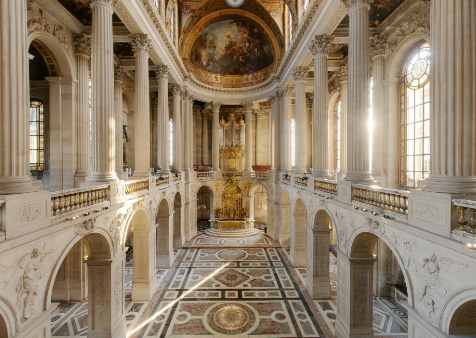
Royal Chapel
This extraordinary two-level palatine chapel was built by Jules Hardouin Mansart between 1699 and 1708 and completed by Robert de Cotte in 1710.
The paintings on the vaulted ceiling by Antoine Coypel, Charles de la Fosse and Jean Jouvenet, as well as the lavish decoration fashioned by a team of sculptors working for Louis XIV, depict a number of Old and New Testament scenes. Facing the royal gallery is the remarkable organ, created by Robert Clicquot, the King's organ builder, which was first played on Easter Sunday 1711 by François Couperin.
Even though Hardouin-Mansart did not witness the completion of the chapel, he was the one who had dictated the major aspects of the architecture and decor: a ground floor with a nave, aisles and ambulatory, and an upper floor with galleries, a harmonious combination of white and gold contrasting with the polychromatic marble floor and paintings on the vaulted ceiling, all combining to create an original space with references to both gothic architecture and baroque aesthetics.
Every day, generally at 10 a.m., the court would attend the King's mass. The King would sit in the royal gallery, surrounded by his family, while the ladies of the court would occupy the side galleries. The "officers" and the public would sit in the nave. The King would only descend to the ground floor for important religious festivals when he would take communion, for Order of the Holy Spirit ceremonies and for the baptisms and weddings of the Children of France, which were celebrated there between 1710 and 1789. Above the altar, around the Cliquot organ played by the greatest virtuosos of their age, including François Couperin, the Chapel Choir, renowned throughout Europe, would sing motets throughout the entire service, every day.
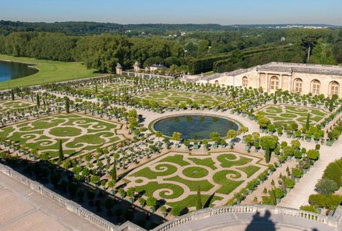
The Orangerie gardens
From May to October, orange trees and other shrubs are taken out of the Parterre Bas of the Orangerie gardens. At the center of this parterre, there is a large circular pool surrounded by six sections of lawn.
Orangerie
A great stone cathedral within a formal garden, The Orangerie is both a royal and magical place.
Built between 1684 and 1686 by Jules Hardouin-Mansart to house and protect precious trees and shrubs during the Winter, this extraordinarily large building is located beneath the parterre du Midi (South flowerbed), for which it acts as a support. Two monumental staircases, known as "les Cent Marches" (the hundred steps), frame the Orangerie's three galleries, which overlook the parterre where, during the Summer, more than 1,200 exotic trees are arranged.

 EN
EN DE
DE IT
IT FR
FR ES
ES RU
RU JP
JP RO
RO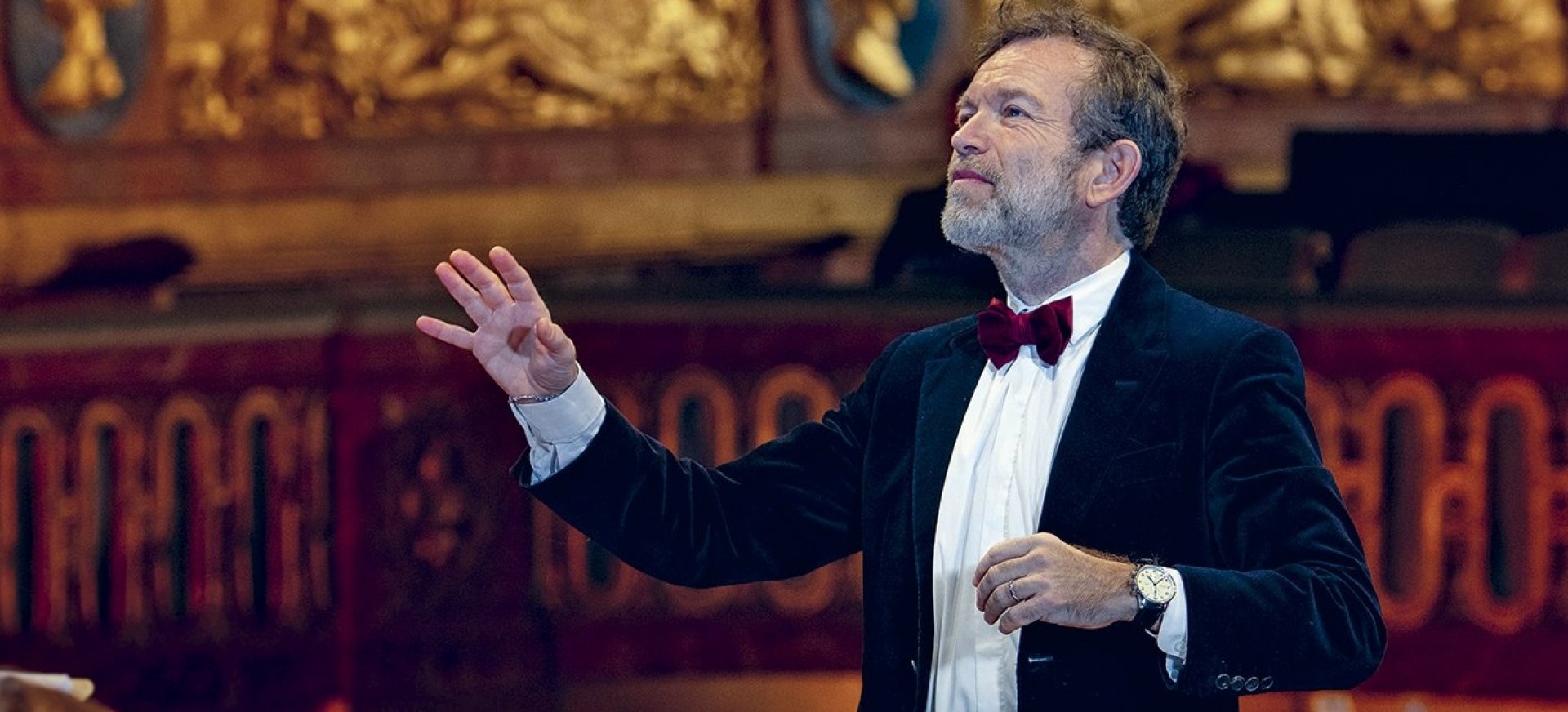
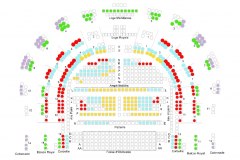 Seating plan
Seating plan 
